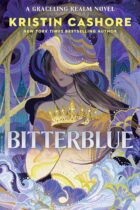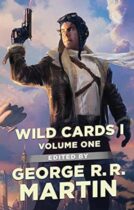
Book Spotlight: Spirits (Sparks Saga, Book Two) by R.S. McCoy
Bonjour, Beardies!
It has been far too long, so please forgive my absence…
Today, however, I have a special treat, and it’s not just my return from the depths of non-existence.
A while back, I spotlighted the first book of The Sparks Saga, an exciting new series by RS McCoy. The book, also titled Sparks, was phenomenal. After reading the 5-star book, I was so happy that RS McCoy stumbled upon the blog and requested a review. There was one hiccup, however. Although a top-rated book for me, the editing was lacking. Luckily, RS McCoy agreed to my pleading that I edit it for her. I couldn’t let such a great story suffer the stigma of a bad editor.
With that said, I also edited Spirits, the subject of this Spotlight. Let it be known, however, that I show no bias to either book given my involvement—my involvement was a direct response to my absolute love with this series and not the other way around, and I can’t wait to give you all the juicy details. And by details, I mean Gems—not spoilers.
{—PREMISE—}
LARK DAVIES sleeps in a gilded palace and eats the finest foods, but he would trade it all to change that one night. Unable to use his talent for mind-reading to prevent a series of murders, Lark’s dreams are ravaged by gruesome memories. Robbed of sleep and slowly losing his sanity, the devoted lover and expectant father can only watch as his life continues to spiral out of control.
Whispers of invasion threaten what little peace their new life might have offered. Khea, the new queen of Nakbe–and his only light in the night–declares human sacrifice to be a necessary component of the island culture, forcing Lark to assert his disapproval. For the first time, the unifying bond he shares with her isn’t enough to keep them together.
With his mentor at his side, Lark’s only hope to stand against the queen and avert a future of death lies in his unexplored ability to manipulate physical elements of the world. The two men search out the spirits that control water, fire, and wind in hopes of ending two thousand years of violent traditions before rival nations invade.
{—GEMS FOR WRITERS—}
1. World Building...
PERHAPS you are thinking I always choose this Gem. In part, you’d be correct. But only if the book warrants it. World building is my passion–if you cannot build a believable and enticing world, most likely you cannot fully conceive the story you are writing. It’s often said that writers are often off in their own little worlds, and there’s a reason for that: they are. Most great writers submerge themselves into the worlds they are putting to page.
MCCOY has not only created a wonderful world in her series, but the individual regions that make up the world as a whole are worlds within themselves. Each has its own culture, its own history, and its own struggles, all of which McCoy describes beautifully. She truly delves deeper into the Nakben culture in writing Spirits, and we as readers feel as much a part of the world as Lark, Khea, and Avis.
2. Magical systems...
3. Characterization...
THIS might sound cliché, but McCoy‘s characters truly leap from the page–most into your heart. As a reader, you connect with the characters on a level that you do in everyday life–at least I did. From the amorphous green fog to the unlikeliest of friends found deep in the Silver Springs, each has a distinct personality you grow to love–or, in some cases, hate. The human condition and its complete range of emotions are not lost with McCoy She incorporates almost the entirety of its span, and believably so.
4. ALTERNATIVE LIFESTYLES...
{—RATING—}
{—CONCLUSION—}
IF you haven’t yet picked up the first book of this wonderful series, do so now! It’s not only about magic, it’s about life, love, loss, and looking at the world through another’s eyes. It’s about learning about the magic and power within yourself. It’s about friendship and connection to the world around us in a way which we as humans have lost.
I can’t wait for the third installment of this series, and I’m gloating in the fact that, as its editor, I get to see it before any of you. 😉
Until next time—Happy Scribing!


























